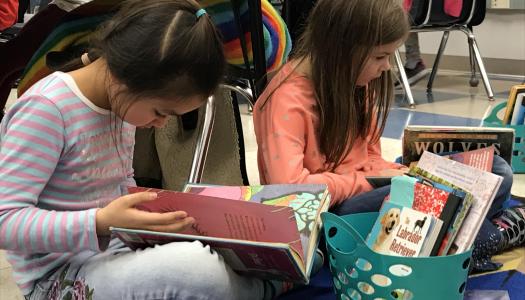The ABC's of the Common Core: A–H
Join Our Community
Access this resource now. Get up to three resources every month for free.
Choose from thousands of articles, lessons, guides, videos, and printables.
After reading and rereading the Common Core Standards, discussing them with colleagues, and attending valuable workshops, I've come to regard the College and Career Readiness Anchor Standards for Reading Grades K?5 as a compass to guide instruction. The anchor standards describe the broad expectations for students in grades K?5 and the grade-level standards specifically identify how those skills look at a particular grade level (National Governors Association Center for Best Practices, 2010).

Here are a few practical ideas that may help teachers implement the Common Core State Standards for reading in grade K?5 and beyond. As you will note, many of these recommendations are aligned to the guiding principles of Daily 5 and CAFE.
A is for ANNOTATE TEXT. Gone is the day of the page dripping in yellow highlighter ink; in its place is a text carefully analyzed by a critical reader with a pencil close at hand. Teachers can impart the skill of annotation through frequent modeling followed by student practice. Before students take pencil to text, they have to identify the most important information. Annotating requires students to stop, ponder, and think critically.
B is for BUILD STAMINA. The Common Core State Standards encourage rigorous instruction. The standards assume that students will be able to read independently while maintaining their concentration. Just as an athlete doesn't become ready for a marathon overnight, a reader doesn't develop stamina in a day. Practitioners of the Daily 5 recognize that readers build stamina minute by minute, each day extending the time they are able to read in one sitting (Boushey & Moser, 2006).
C is for CITE EVIDENCE. Questions like "How do you know?" and "What in the text makes you think that?" are bound to resonate in classrooms across the country this year. Asking text-dependent questions is a surefire way to force students to focus on textual evidence in their verbal and written responses. Teachers have been asking these types of questions for years, but with the Common Core State Standards, the ability to cite evidence is even more crucial to student success. The CAFE Menu promotes the use of text evidence in several strategies that fall under the umbrella of Comprehension; examples from the menu are "Predict what will happen; use text to confirm" and "Infer and support with evidence" as well as "Determine and analyze author's purpose and support with text" (Boushey & Moser, 2009).
D is for DETERMINE IMPORTANCE. Readers who highlight every sentence on the page grapple with central ideas and themes. They think that all of the author's thoughts are of equal importance. To build skill in this area, teachers can offer students occasions to examine a piece of text, sentence by sentence, idea by idea, to determine the most critical concepts and classify details as major or minor. The CAFE Menu comprehension strategy, "Use main idea and supporting details to determine importance" directs students to this detailed type of textual analysis (Boushey & Moser, 2009).
E is for EXPAND VOCABULARY. Users of the CAFE Menu will certainly recognize this commendable goal, and teachers will attest that knowledge of vocabulary is linked to reading comprehension. Word knowledge gives readers, writers, and speakers power?the power to understand the language of a text and the ability to interpret its nuances. Undeniably, the best way to learn new words is through voracious reading.
F is for FOSTER SELF-EFFICACY. As the Common Core State Standards delineate the characteristics of the 21st-century learner, independence and the ability to ask critical questions are crucial. As both CAFE and Daily 5 emphasize, teaching children to be metacognitive and take responsibility for their own learning is a top priority. The "Behaviors that Support Reading" listed at the bottom of the CAFE Menu (get started right away, stay in one place, work quietly, read the whole time, Increase stamina, and select and read good-fit books) set students on the course for success (Boushey & Moser, 2009).
G is for GROW THINKERS. Through teacher modeling, whole-class instruction, small-group work, learning partnerships, and individual conferring, students grow in their understanding of a text. By inviting students to consider different perspectives and examine an issue from diverse perspectives, teachers stimulate childrens critical thinking.
H is for HONOR CHOICE. Choice and engagement are inextricably linked. Students learn to love reading when they encounter texts that capture a particular interest. Through conferences with their teacher, students can express their literary interests; in turn, teachers can offer recommendations for book choices.







